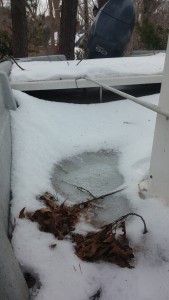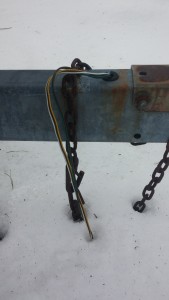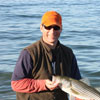Why it’s Important to Check on your Boat this Winter
By Tom Keer
Feb 15, 2015
The recent storms throughout the Northern half of the country have brought rain, wind, ice, and snow.
The recent storms throughout the Northern half of the country have brought rain, wind, ice, and snow. Just to give you an idea about how bad it’s really been, in my hometown we had 42 inches of snow in one week, winds of 60 MPH with gusts to 80 MPH, and then rain. The first thing I did when the storm subsided was NOT to grab a shovel. Instead, I check on my boat. The snow removal could wait…

While there are many items on a list, here are a few important quickies to check:
-
Check your stands. If your boat is on stands you’ll certainly want to make sure that the heavy winds didn’t cause the boat to shift. The last thing you’ll need is to see your boat on the ground come spring.
-
Tarps. It’s the reason that shrink-wrapping your boat in the fall is a great idea. Tarps work fine, but if they come loose, then leaves, snow and ice can fill the cockpit and prevent proper drainage of rain or melting snow and ice. If your tarp blew off in a stiff wind then clean the cockpit and reattach the tarp.
-
Drainage. Icicles in drain spouts mean that water can’t escape. That water stores in the stern and in the event of a heavy rain your bilge can fill and freeze, thereby causing structural damage.
-
Tire Pressure. Most boaters put trailer axels on blocks when they store them for the winter. In the event that you didn’t, check your tire pressure. The cold weather can reduce your pressure thereby causing your seal to break. When you hitch up your boat to drive you’ll blow out the tire.
-
Trailer lights. Trailer light assemblies corrode very easily, so make sure your 4-way end isn’t sitting in a snow bank. If it is, clean it with a wire brush, spray with a hydrophobic lubricant and cover with a zip lock bag. Lights should be operational when you plug ‘em in come spring.
-
Rollers and bunks. If roller and bunk brackets are surrounded by snow and ice then they’ll rust more easily. Shovel out around them so they stay dry and the rollers are less likely to seize up and the bunk brackets won’t need replacing as often.
-
Boats in the water should have an aerator around them. The aerator keeps the water moving which means ice won’t form around the hull. You probably know that freshwater freezes at 32 degrees Fahrenheit, but just remember that saltwater freezes at 28 degrees Fahrenheit. Thick ice can crack a hull, so keep the water moving to prevent hull damage.
-
Check your bilge pumps. If your boat is in the water and the bilge freezes or quits, it can sink. During cold weather charge your batteries to keep your bilge operational.










